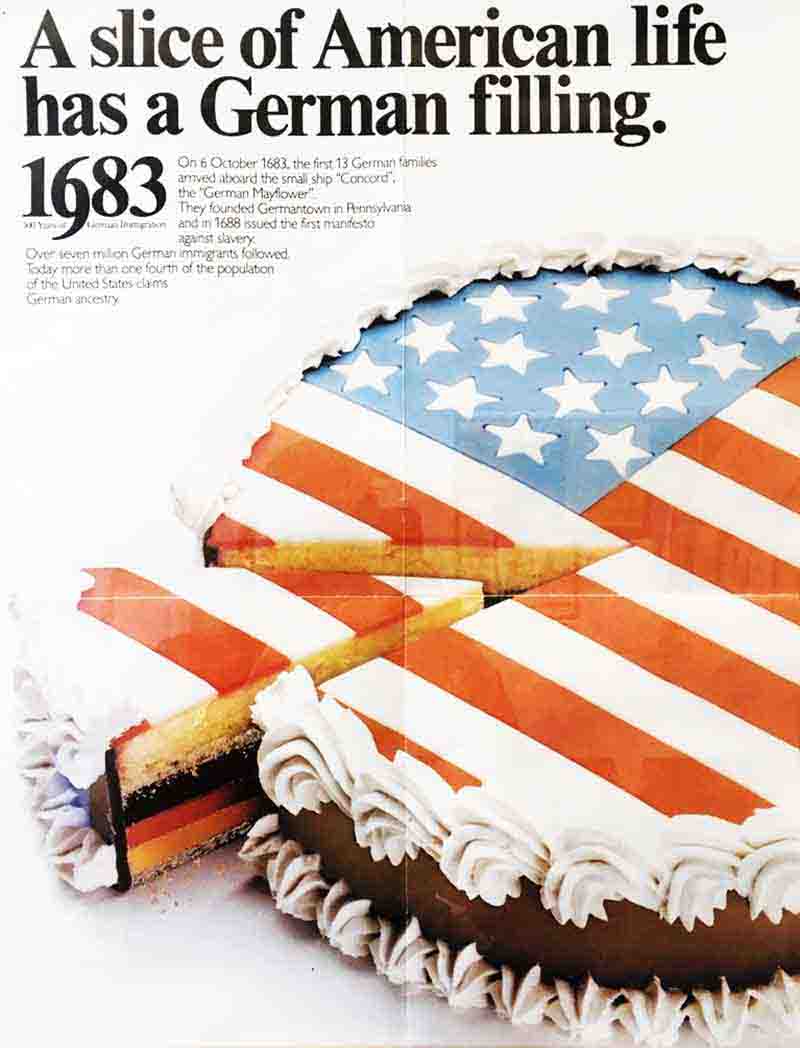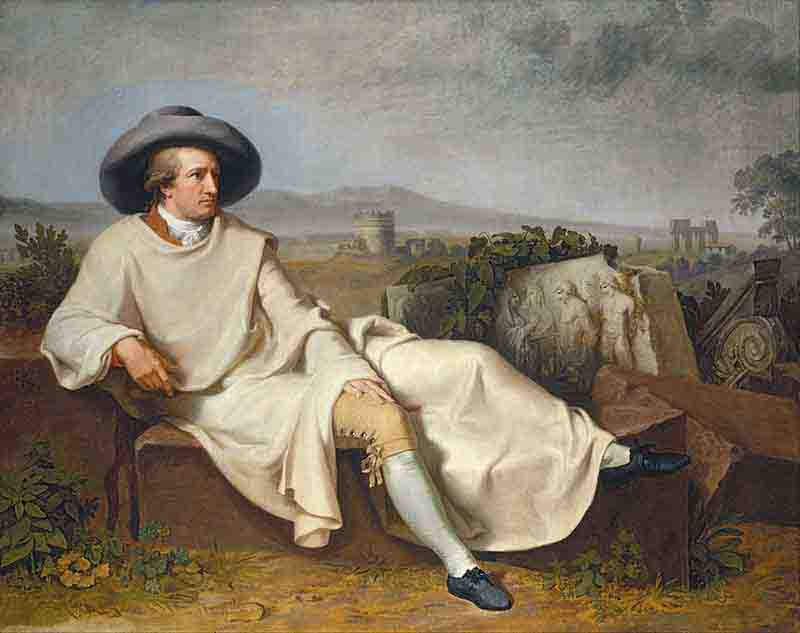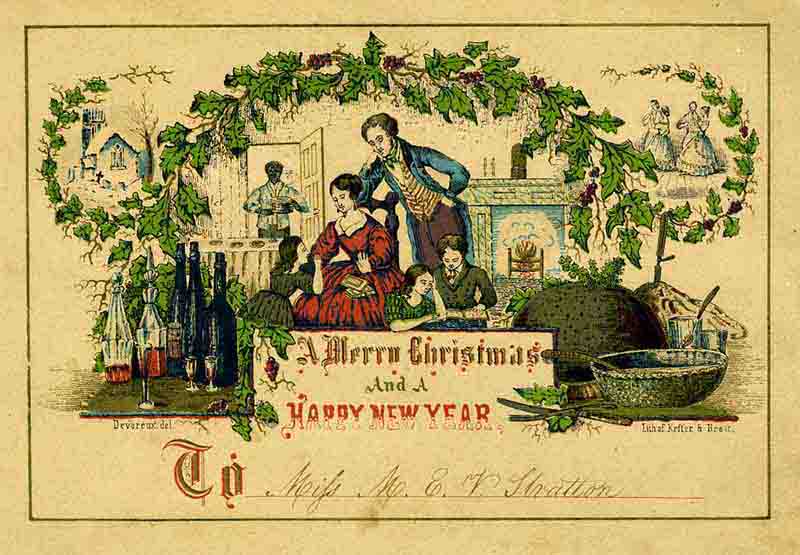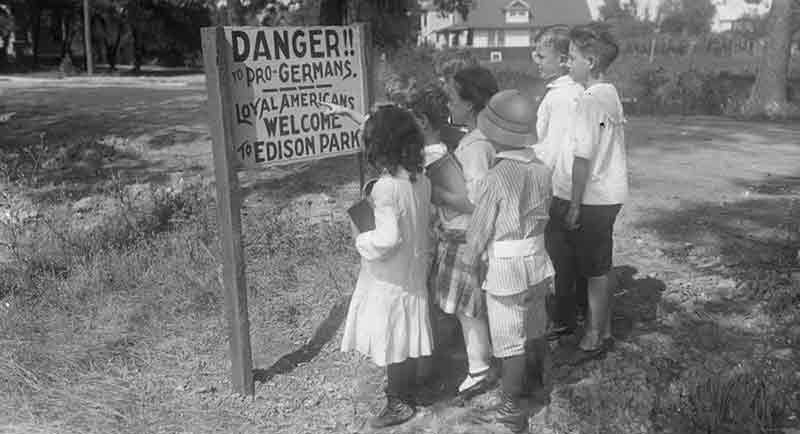What is German American day ?
German-American Day, proclaimed by former President Ronald Reagan in 1983 is celebrated annually on October 6 in the United States. On this day, the heritage and culture of millions of Americans are acknowledged. Events by German-American associations feature traditional German American food, music, and parades.

While German American Day was known as early as the 19th century, it didn't experience its renaissance until 1983.
German Americans belong to the group of emigrated Germans. The requirement is that they themselves or their ancestors immigrated to the United States from German-speaking countries and have American citizenship.

October 6 commemorates the contribution of German immigrants to the development and progress of the United States. This date refers to a specific historical event, namely October 6, 1683, when 13 families from Krefeld in the Lower Rhine region founded the settlement of Germantown near Philadelphia

The commemorative text, German Immigration Tricentennial, appears in three lines of brown type in the upper left of the American stamp. The similar German text in tiny letters runs up the left side of the vignette and the postal identification down the right side.
In the 19th century, the traditions of the German-Americans were first established as an annual holiday but vanished almost entirely from public attention in the wake of the two world wars and the accompanying anti-German sentiment of the 20th century
Some say this is German American day, seeing the Band here in costume, I say it's Oktoberfest
German-American Day did not experience a comeback until 1983, when President Ronald Reagan declared October 6 German-American Day on the occasion of the 300th anniversary of the founding of Germantown.
On August 18, 1987, the United States Congress officially recognised the date through a resolution signed by President Reagan.
Reagan announced the decree on October 2, 1987, at an official ceremony in the White House Rose Garden, calling on his countrymen to honour the legacy and influence of the German settlers with adequate celebrations and activities.
Since then, every U.S. president has proclaimed this historic day of remembrance during his term in office.
Proclamation by President Ronald Reagan, October 2, 1987
More Americans trace their heritage back to German ancestry than to any other nationality. More than seven million Germans have come to our shores through the years, and today some 60 million Americans -- one in four -- are of German descent. Few people have blended so completely into the multicultural tapestry of American society and yet have made such singular economic, political, social, scientific, and cultural contributions to the growth and success of these United States as have Americans of German extraction.

Nothing is worth more than this day. You cannot relive yesterday. Tomorrow is still beyond your reach. - Johann Wolfgang von Goethe
The United States has embraced a vast array of German traditions, institutions, and influences. Many of these have become so accepted as parts of our way of life that their ethnic origin has been obscured. For instance, Christmas trees and Broadway musicals are familiar features of American society. Our kindergartens, graduate schools, the social security system, and labor unions are all based on models derived from Germany.

German immigrants had no reservation about celebrating Christmas, and many of today's modern traditions originate from this heritage.
German teachers, musicians, and enthusiastic amateurs have left an indelible imprint on classical music, hymns, choral singing, and marching bands in our country. In architecture and design, German contributions include the modern suspension bridge, Bauhaus, and Jugendstil. German-American scientists have helped make the United States the world's pioneer in research and technology. It was a German American who first fought for and established the tradidion of freedom of the press on the American Continent. The American work ethic, a major factor in the rapid rise of the United States to preeminence in agriculture and industry, owes much to German-Americans' commitment to excellence.

As long as I have any choice in the matter, I shall live only in a country where civil liberty, tolerance, and equality of all citizens before the law prevail. These conditions do not exist in Germany at the present time and will not as long as the current regime remaines in power. - Albert Einstein 1933
For more than 3 centuries, Germans have helped build, invigorate, and strengthen this country. But the United States has given as well as received. Just a generation ago, America conceived of and swiftly implemented the Marshall Plan, which helped the new German democracy rise from the rubble of war to become a beacon of democracy in Central Europe. The Berlin Airlift demonstrated the American commitment to the defense of freedom when, still recovering from war, Berlin was threatened by strangulation from the Soviets.

A worker at the Rhein-Main airport secures sacks of flour loaded onto a plane for shipment to blockaded Berlin during the first week of the Berlin airlift in 1948. A large-scale American armada dropped food over West-Berlin to assure the city would not starve despite a Soviet land blockade.
Today, the Federal Republic of Germany is a bulwark of democracy in the heart of a divided Europe. Germans and Americans are rightfully proud of our common values as well as our shared heritage. For more than 3 decades the German-American partnership has been a linchpin in the Western Alliance. Thanks to it, a whole generation of Americans and Europeans has grown up free to enjoy the fruits of liberty.
Our histories are thus intertwined. We now contribute to each other's trade, enjoy each other's cultures, and learn from each other's experiences. The German-American Friendship Garden, which will be dedicated in the District of Columbia in the near future, is symbolic of the close and amicable relations between West Germany and the United States.

The German-American Friendship Garden on the National Mall in Washington, D.C. stands as a symbol of the positive and cooperative relations between the United States of America and Germany.
The Congress, by Public Law 100 - 104, has designated October 6, 1987, the 304th anniversary of the arrival of the first German immigrants in Philadelphia, as "German-American Day'' and has authorized and requested the President to issue a proclamation in observance of that day.
Now, Therefore, I, Ronald Reagan, President of the United States of America, do hereby proclaim Tuesday, October 6, 1987, as German-American Day. I urge all Americans to learn more about the contributions of German immigrants to the life and culture of the United States and to observe this day with appropriate ceremonies and activities.
In Witness Whereof, I have hereunto set my hand this 2nd day of Oct., in the year of our Lord nineteen hundred and eighty-seven, and of the Independence of the United States of America the two hundred and twelfth. - Ronald Reagan
Are you curious about music, art, technology, fashion, lifestyle, and beer?
If so, then you need to subscribe to the free Likewolf newsletter.
100% privacy. When you sign up, we'll keep you posted.
Carry On the Legacy
German Americans in the United States
